 | John Radford Young - Mechanics, Analytic - 1834 - 302 pages
...parts of all machinery are called the mechanical powers. These are six in number, and are as follow : the Lever, the Wheel and axle, the Pulley, the Inclined Plane, the Screw, and the Wedge. The Lever (75.) A lever is a rigid bar or rod, moveable about a fixed point or... | |
 | John Bonnycastle - Measurement - 1835 - 308 pages
...simple of mechanical applications to increase force and overcome resistance. They are usually accounted six in number, viz. The Lever —The Wheel and Axle—...The Inclined Plane — The Wedge — and the Screw. LEVER. To make the principle easily understood, we must suppose the lever an inflexible rod without... | |
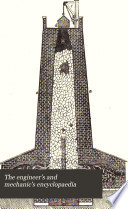 | Luke Hebert - Industrial arts - 1835 - 938 pages
...that enter into the construction of the various parts of machinery : they are usually considered to be six in number ; viz. the lever, the wheel and axle,...pulley, the inclined plane, the wedge, and the screw. It may be easily shewn, however, that these are capable of being reduced to greater simplicity. Thus... | |
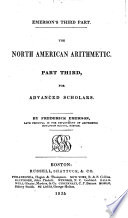 | Frederick Emerson - Arithmetic - 1835 - 300 pages
...resistance than could be effected by the direct application of natural strength. They are usually accounted six in number; viz. the Lever, the Wheel and Axle, the Pulley, the Inclined Plane, the JVedge, and the Screw. The advantage gained by the use of the mechanical powers, does not consist in... | |
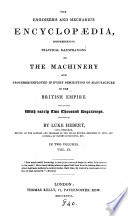 | Luke Hebert - Industrial arts - 1836 - 942 pages
...that enter into the construction of the various parts of machinery : they are usually considered to be six in number ; viz. the lever, the wheel and axle,...pulley, the inclined plane, the wedge, and the screw. It may be easily shewn, however, that these are capable of being reduced to greater simplicity. Thus... | |
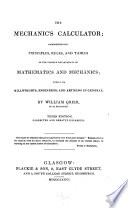 | William Grier - Mechanical engineering - 1836 - 384 pages
...other. 2. The simple machines, or those of which all others are constructed, are usually reckoned six : the lever, the wheel and axle, the pulley, the inclined plane, the wedge, and the screw. To these the funicular machine is sometimes added. 3. The weight signifies the body to be moved, or... | |
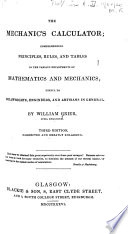 | William Grier - Mechanical engineering - 1836 - 380 pages
...machines, or those of which all others are constructed, are usually reckoned six : the lever, the wiieei and axle, the pulley, the inclined plane, the wedge, and the screw. To these \hefunicular machine is sometimes added. 3. The weight signifies the body to be moved, or... | |
 | R T. Linnington - 1837 - 274 pages
...simple, and is also that on which all the other mechanical powers depend. The Mechanical Powers are six in number; viz., the Lever, the Wheel and Axle,...Pulley, the Inclined Plane, the Wedge, and the Screw: in the various combinations of these all machines exist. The Lever is chiefly used to raise heavy weights... | |
 | Leonard Dunnell Gale - Physics - 1838 - 308 pages
...as long to lift it through the same H»ce. LXXII. There are usually reckoned six mechanical powers : the lever ; the wheel and axle ; the pulley ; the inclined plane ; the wedge ; and the screw. THE LEVER. LXXIII. THE LEVER is a bar of iron or wood, supported by and moveable on a round centre... | |
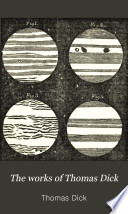 | Thomas Dick - Philosophy and religion - 1838 - 690 pages
...bars of thin iron ?" And when we consider that all the mechanical powers may be reduced t'i the /ever, the wheel and axle, the pulley, the inclined plane, the wedge and the «crew, how astonishing are the forces exer'ed, and the effects produce J, by their various combinations... | |
| |